7 Benefits of Baking with High Speed Convection Ovens
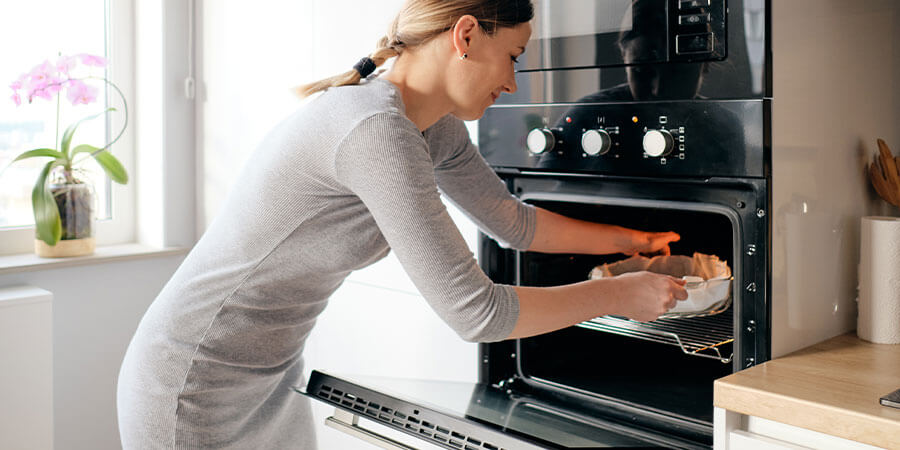
Are you thinking about getting a convection oven? Or maybe you already have one and have no idea how convection ovens work. Don't feel bad! You're far from alone. A lot of people have heard the term convection but don't really understand how it differs from conventional cooking. If they did, though, they'd be impressed by how easy they are to use. And many cooks have gotten quite savvy with them. Read on to learn the benefits of using one.
So Just What Are Convection Ovens?
Convection ovens and conventional ovens are nearly identical. A conventional oven has just one source of heat–typically at the bottom of the oven. So too does a convection oven. But a convection oven also has a fan and exhaust system that a regular oven doesn't. These two additional elements help to blow hot oven air over and around the food, then vent it back out. What are the benefits of this sort of cooking?
1. Shorter Cooking Time
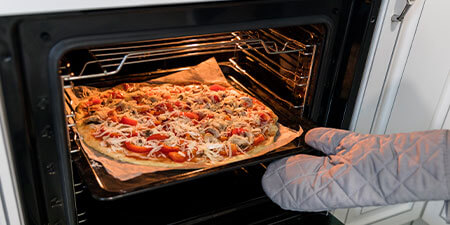
If you're of a certain age, you remember a time before microwave ovens. Planning meals required you to factor in cooking time. But then you probably also remember that when microwaves hit the scene, there were certain foods that just didn't cook as well in a microwave. A convection oven sits squarely between the microwave and a conventional oven. Because there's a fan, food can be cooked at lower temperatures and it takes a shorter time than in a traditional oven. And it will be cooked as it would in a traditional conventional oven. It's not as fast as a microwave, of course. But you can easily shave off 1/3 of the cooking time.
2. Great for Roasting Meats
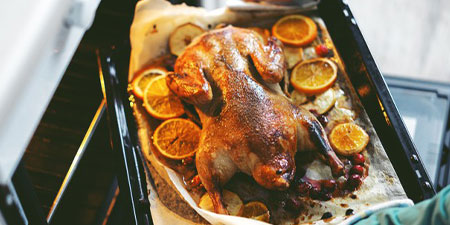
Seeking the perfectly roasted turkey for the holidays? While convection isn't perfect for every sort of cooking, it's a fantastic way to roast meats. When you correctly place the meat on the roasting rack, convection will immediately sear the food. With all of the essential juices locked in, the blower continues to cook the meat without dehydrating. And there's no need for basting either. If you do choose to baste with a marinade though, you can. You'll just need to wait to use it until the last hour of cooking. This will allow the marinade to candy or carmelize without getting burnt.
3. Ability to Cook Multiple Dishes
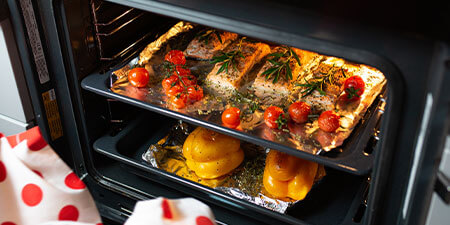
Did you know that when you put more than one dish at a time in a conventional oven, the temperature drops inside? This makes it very difficult to determine cooking times when you're trying to balance multiple dishes. One dish will then cook faster than the others. And if you're cooking a big meal, this can be a serious hassle. With a convection oven, you can put in multiple dishes with no issue of the temperature dropping. You can even stack dishes, and the oven will still "see" these many items as just one single dish. This is ideal for a commercial setting. In addition, you don't have to worry that you're putting your dishes on a rack that's too close to the top or the bottom of the oven. With a convection oven, you don't run the risk of burning your food if it ends up there. Everything will be cooked at the same—and correct—temperature.
4. Recipes Only Need Minor Adjusting

That recipe you're dying to try is written with the assumption that you'll be using a conventional oven. So you'll have to do some reconfiguring. But converting recipes for convection ovens is really just a matter of common sense. Commerical pizzerias are even using them! Most professionals recommend that you use the temperature and time from the original recipe as a guideline. Then check for doneness after two-thirds to three-quarters of the recommended baking time has passed. Also, reducing the temperature by 25°F and opening the oven door as little as possible are both advised. And keep in mind that, as we mentioned above, convection ovens aren't perfect for everything. While they're fantastic for roasting meat, they're not ideal for baking bread or cakes where the dough or batter needs to rise. But for the most part, with just a little experimentation, you'll get a feel for how to make that conversion from conventional to convection.
5. Sensors and Automatic Features
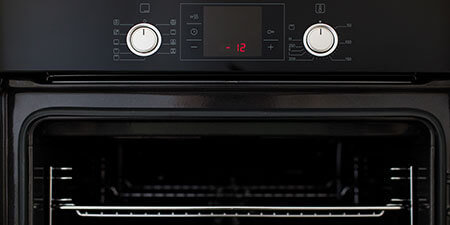
It's not unusual to find preset and "sensor cooking" options on newer convection ovens. These can be tremendously helpful. One caveat though–some sensors work better than others. And sensor cooking, in general, still has a ways to go before being perfected. It's always best practice to keep an eye on what you're cooking. Especially if it's a dish with which you don't have as much familiarity. The safest bet is to use a good old-fashioned thermometer probe in situations where you're not sure. While sensor cooking will likely continue to improve, it's always better to be safe than sorry. Especially when it comes to roasting meats.
6. Food Cooked More Evenly
In case you haven't figured it out yet, the fan makes all the difference in convection ovens. Convection ovens don't have those pesky hot and not-so-hot spots. That's because the fan continues to circulate hot air. And this results in an even temperature throughout the oven. No more taking out that casserole with the browned and bubbling cheese, only to find that the center is still cold once you've served it.
7. Efficient in So Many Ways
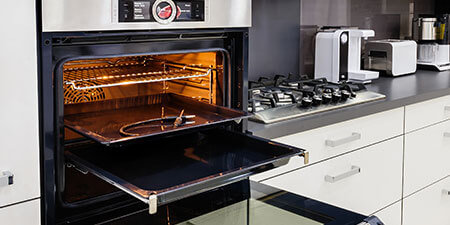
Because convection ovens require a lower temperature and shorter cooking time than conventional ovens, they are naturally more energy efficient. And because you're able to fill a convection oven with multiple pans all at once, you'll save additional time on not having to cook separate batches. Finally, they're space savers too. In many cases, a convection oven can be combined with a conventional oven or even a microwave oven. So they don't require you to add another appliance.
Turn up the Heat
Do you feel that convection ovens could be the perfect solution for your commercial business? Then it might be time to start exploring this quicker and more efficient option for cooking. Be sure to check out our convection oven selection. We have something to fit every need.
Share This!